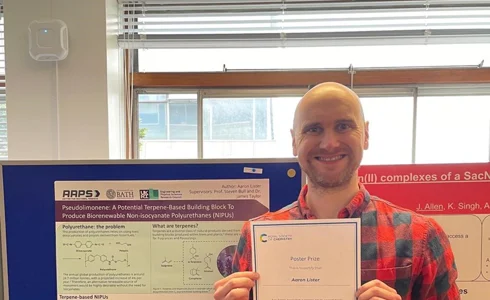
Aaron Lister
Theme
Low Carbon FuelsProject
Utilisation of Terpene Feedstocks to Produce Polymers for the Automotive IndustrySupervisor(s)
Dr James Taylor, Prof Chris ChuckBio
Aaron completed his BSc Chemistry degree from the University of Huddersfield in addition to receiving the Ross Thompson Physical Memorial Prize for Outstanding Performance in Physical Chemistry in the final year. With a particular interest in organic chemistry, Aaron is very excited to have the opportunity to learn more about automotive propulsion technologies in the hope of building his understanding on alternative fuel sources. Concerning his research project, Aaron will be working towards optimising production of p-menthane/p-cymene blends from naturally occuring crude sulfate turpentine and how these blends could be incorporated within combustion engines. Away from University Aaron enjoys making music, lifting weights and travelling.
Fun Facts
- I owned three cars before I passed my driving test (it took me five attempts!)
- I've managed a five-a-side football team (we finished bottom of the league!)
- My favourite smelling chemical is Diacetyl which has a buttery aroma and used in microwave popcorn
- I've tried some strange-smelling foods such as Netto, Stinky Tofu and the Durian (definitely the worst) while travelling in Asia, though all tasted absolutely delicious!
